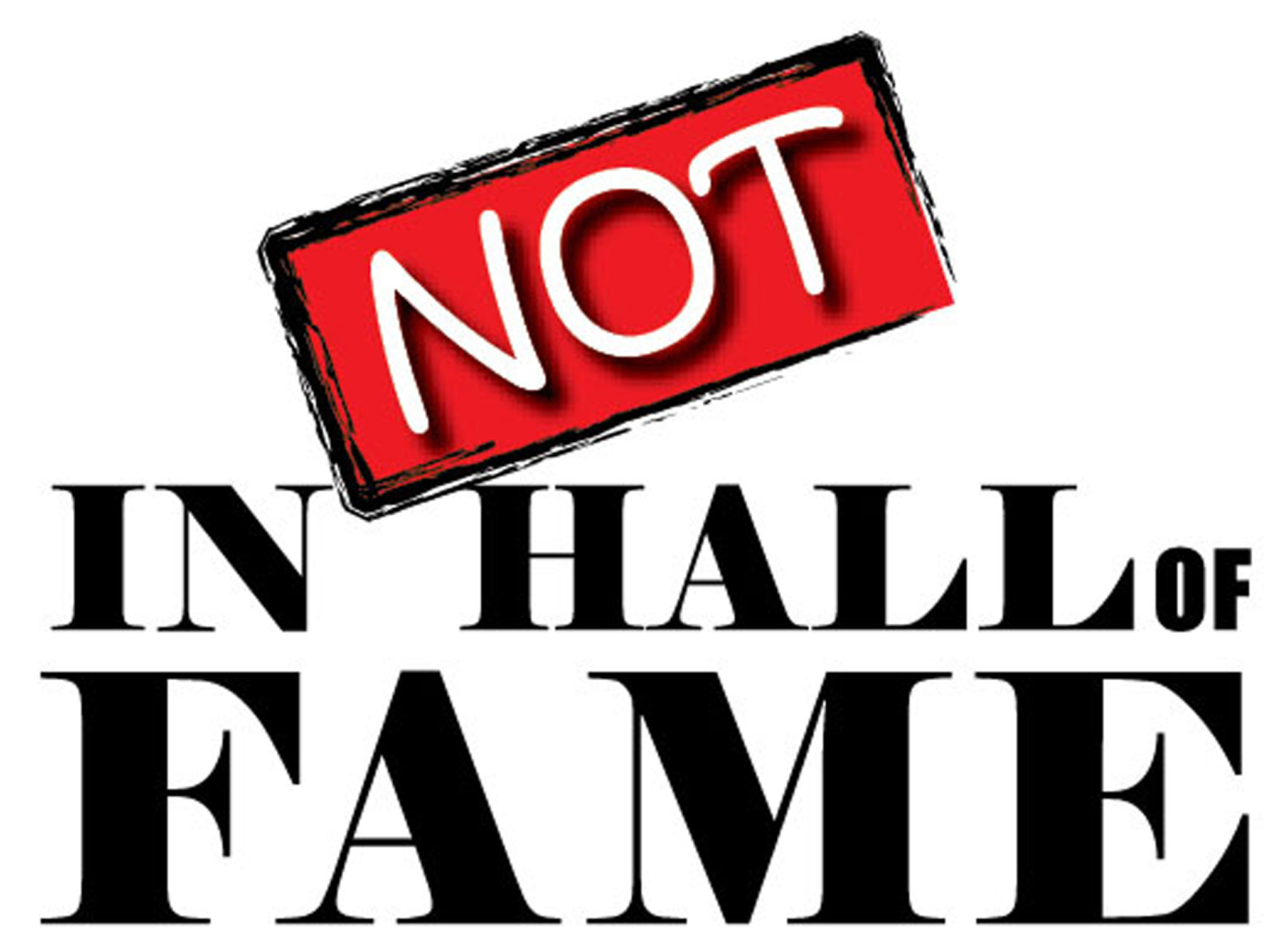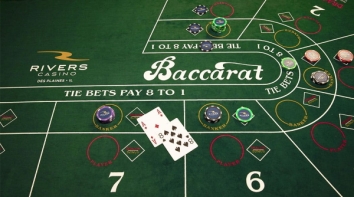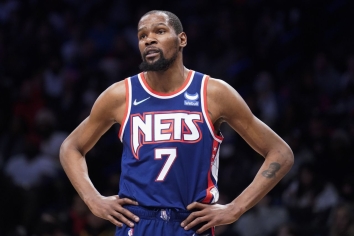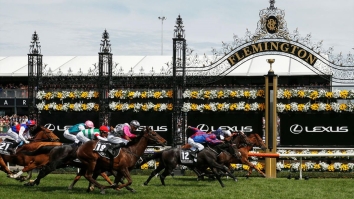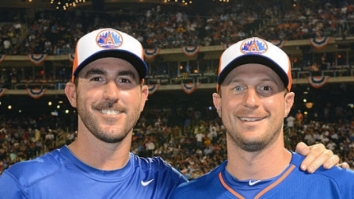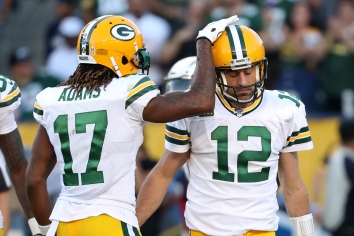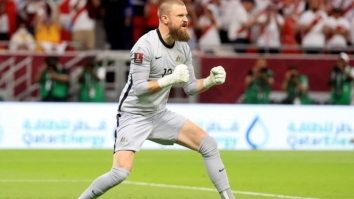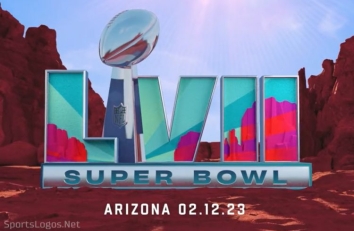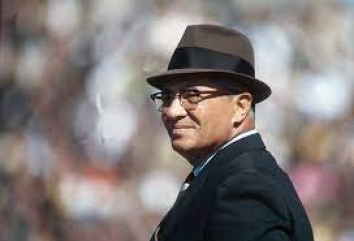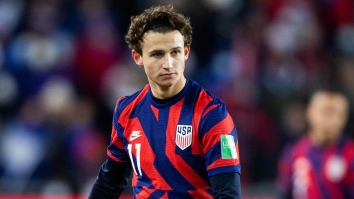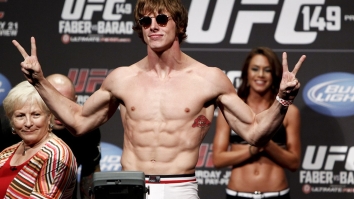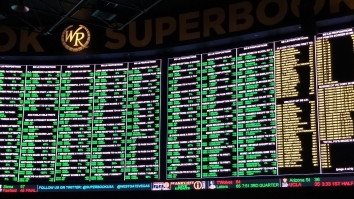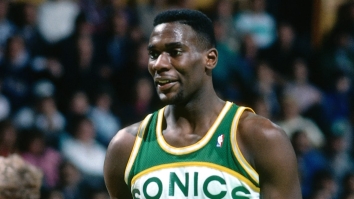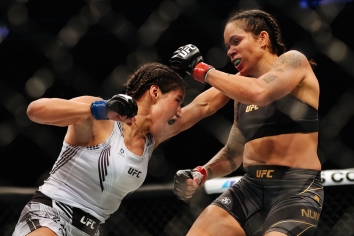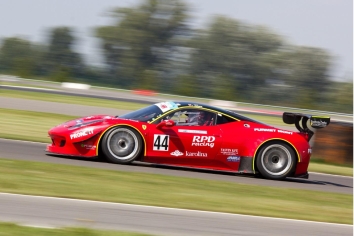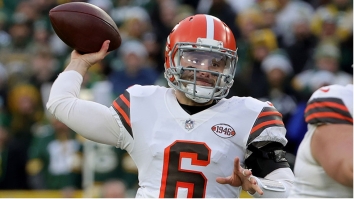From the Desk of the Chairman
What Is Baccarat And The Different Types Of The Game?
In simple terms, Baccarat is a card game where the participant gets to play with three cards. The game has no strategy to win; it is only by luck. The game results are either the player or the banker to win or a tie. The game players get to either bet on the player or the banker’s hand.
The best entertainment for sports enthusiasts
Sports enthusiasts certainly love untypical forms of entertainment that might ensure the same rush of adrenaline as a heated game of their favorite sport. However, sometimes it might be challenging to find something that will engage you the same as a great match between rival teams. Here are some suggestions for the best forms of entertainment that will satisfy even the pickiest sports enthusiasts.
Kevin Durant Issues Apparent Brooklyn Nets Ultimatum
The Brooklyn Nets have a problem. Last season was a bust and should have delivered much more than a limp first-round play-off loss to the Boston Celtics. Now the futures of two of their big names, Kevin Durant and Kyrie Irving, are very much in doubt, and the former of that pair is said to have given his side an ultimatum in relation to his future at the Barclays Center.
The two-time NBA Champion is said to have told Nets owner Joe Tsai that unless he dispenses with the services of general manager Sean Marks and head coach Steve Nash, he’ll seek to leave Brooklyn.
Last season the Nets were considered one of the favorites for the NBA title, and a fair amount of sports betting enthusiasts would have back that bet via sports-betting-ny.com only to see the side struggle for large chunks of the season and end with a very average regular season record of 44-38, and if it were not for Durant, that record could have been significantly worse.
Subsequently, Tsai has moved to quash talk of either of his main backroom staff leaving, stating that they have his support and now there is growing speculation that Durant may push to join the Celtics, a trade that is aided by the fact that he has a strong relationship with Boston coach Ime Udoka, who he worked with at both Brooklyn and as part of the successful Team USA team at the 2020 Tokyo Olympics.
Kyrie Irving is also said not to be happy with the Marks and Nash combination but has less of a say in the matter given his problematic relationship with the Nets after missing out on large chunks of last season due to his vaccination status.
Durant, on the other hand, is a player with less baggage, and when he points out his issues with a coach and general manager, these are clearly going to be listened to, and now the ball is seemingly very much in Tsai’s court.
As a 12-time NBA All-Star, Durant has a great deal of sway in what happens with the Nets, and Brooklyn would do well to try to appease the situation as much as possible, even if this doesn’t mean acting on his advice to sack the pair.
If Durant were to leave, there would clearly be a lot of interested parties, and some speculation has arisen about a move to join the Phoenix Suns.
John Gambadoro of Arizona Sports 98.7 added to the rumors via his sports talk show, stating;
"I'm hearing, and take it for what it's worth, ok? I'm hearing that Kevin Durant is expected to be in the Valley tonight,"
This was echoed by Mike Jurecki, who tweeted;
"Hearing KD landed in Phoenix around 7ish PM has a driver who also provides his security,"
"Technically, he can't meet with the Suns without permission which doesn't preclude him from talking to Suns players."
You can expect a lot more on this story, especially if the 33-year-old doesn’t directly discuss his plans on the matter any time soon.
The Most Popular Melbourne Cup Betting Markets
The Melbourne Cup is known to all Australians as the race that stops the nation - and it’s coming up quickly… It will be run on the first Tuesday of November as it is every year and the bookies will be getting their best odds out. If you don’t know much about the race (or have lived under a stone), then you might want to read the Melbourne Cup guide at Punters.
However, we are expecting a race more exciting than ever - with a massive prize pool - and some incredible performances. If you are looking to watch the race - and put your money on your favourites, then here are some of the best Melbourne Cup betting markets.
The Most Popular Melbourne Cup Betting Markets
As the most popular race in the country, it certainly attracts a lot of betting activity - more than any other race in Australia. On average, every year, the top Australian betting sites turnover around $100 million in wagers - and winners often get quite an excellent return given its large open field. However, some betting markets attract more attention than others. Here are the five most common Melbourne Cup bet types:
The Outright / Straight Out Winner Bet
This is the most common of all - and is particularly popular with those who don’t bet that often on horse races. It is simply a bet on which horse will win the race. If your chosen horse doesn’t come first, then you lose your bet. A win bet pays out more return than a place bet (which we will look at below) - but it is a lot harder to win, so it’s always a case of risk v reward.
Place Bet: Bet on the First Three Positions
A place bet is when you are betting on a horse to come in either first, second or third. Because they are easier to win, they will usually pay out one-quarter of what you would win for a straight-out winner bet. So, placing $10 on a straight-up bet on a horse might win $80, but placing the same $10 bet on the horse placing would only win $20.
These are very popular with casual bettors as they offer a better chance of winning.
Each Way Bets
Another common type of horse bet is each-way betting. This is a mix of the two above bets - you are betting on the horse to win or place. However, this means that if you place a $10 each way bet on a horse, it would cost you $20 - $10 on the win and $10 to place. If your horse wins, you get paid for both bets. If the horse places, you only get paid out at the terms set by your bookmaker.
Quinella Bets
A quinella bet is placing a bet on two horses - one to come first and one to come in second. It won’t matter which order they come in though - as long as one of the horses comes in first and the other one second. This is the most straightforward multiple bet you can make on the Melbourne Cup
Trifecta Bet
This is similar to the above-mentioned bet but you are betting on which three horses you think will come in first, second and third. However, although it’s just one more horse, it is a lot harder to win a trifecta bet than it is a Quinella bet, but that also means that the payouts are much better in return. You can place trifecta bets from as little as $0.50. You can make a boxed bet - where they can come in in any order, or a straight trifecta where you also need to predict their exact order.
Similar Races
If you are a fan of Melbourne Cup betting, here are some similar races to enjoy:
- The Breeder’s Cup, November: This is held over two days and is a famous US race that signals the end of the racing season.
- The Kentucky Derby, May: America’s most famous horse race and part of the prestigious Triple Crown.
- The Preakness Stake, May: A Group 1 race held every May in Baltimore, and another part of the Triple Crown in US racing.
Two of the next Hall of Fame pitchers
Skill and longevity are two of the key characteristics of a Hall of Fame candidate in the MLB. These credentials are more important for pitchers attempting to secure a place in the history of the sport, as it is far from easy to have an established career at the top amid the rigors of taking the mound one night in every five per week.
The players who do make it are a special breed and deserve their spot for remaining on top of their game over an extended period of time, but also showing their durability in a position that has a near 100% injury rate. Here are two of the outstanding candidates currently active in the MLB who are destined to join the Hall of Fame.
Justin Verlander
After a 15-year career at the top of the sport and earning his World Series crown with the Houston Astros in 2017 it appeared as though Verlander’s career was over. Like so many players before him, he had to undergo Tommy John surgery, which at the age of 38, seemed like the end. However, he returned to the action signing a one-year deal with the Astros for the 2022 campaign and has been nothing short of sensational.
Verlander has achieved everything in the game during his time in the MLB with the Detroit Tigers and Astros, winning the AL MVP in 2011, the All-MLB First-Team in 2019, along with the most wins as a pitcher in three seasons, two Cy Young Awards and multiple All-Star berths. He did not need to return to the MLB after his injury, but he has excelled for the Astros in the 2022 season, and he has put them on course for another run at the World Series, with a bet on MLBworth +425 for the Astros to win the crown. It would be the icing on the cake of a true Hall of Fame career for Verlander.
Max Scherzer
Scherzer has punched his ticket to the Hall of Fame, producing elite performances throughout his various stops in the MLB. He got one over his former team-mate with the Tigers in the 2019 World Series to win the crown for the Washington Nationals, ensuring that both men would end their careers with title victories. Incredibly, the Tigers failed to win the World Series despite boasting both Verlander and Scherzer in their starting rotation.
Scherzer like Verlander was forced to leave the Tigers to secure the title, but he has maintained his standard of excellence. He has bettered Verlander, earning two All-MLB First-Team nods and three Cy Young Awards along with eight All-Star berths. Scherzer’s durability has been nothing short of sensational as he has avoided many of the injuries that have plagued his contemporaries, allowing him to stack up wins and achievements after not having a lost season. In the 2022 campaign he joined the New York Mets, and although he has been excellent and maintained his high standards to steer the club towards the playoffs, the Mets will need a special effort to allow him to win a second title.
Aaron Rodgers Makes Light of Davante Adams Hall of Fame Comments
Aaron Rodgers isn’t a man who holds back, and it’s perhaps why he’s so evident in the public eye, perhaps more so than anyone else in the NFL. When the Green Bay Packers star talks, there’s always a microphone ready to amplify his message. The veteran quarterback can also be viciously amusing, and it’s clear that he has the respect of his team-mates, both past, and present.
In a light-hearted interview, Rodgers echoed previous comments made by Davante Adams when he responded to the return of Allen Lazard after he missed off-season duty as a way to force the issue on a new contract, the 38-year-old joked;
"I mean, it's always tough going from Hall of Famer to Hall of Famer,"
This was a direct response to Adams discussing now working with Derek Carr at the Las Vegas Raiders, having previously had the pleasure of receiving passes from Rodgers for the best part of eight years.
Rodgers is always ready to put himself into the action and to be fair, he is a big part of Green Bay and is pretty much the unofficial spokesman for a team he has represented with honor for 17 seasons.
American football betting can be an exciting and rewarding experience, but it can also be a bit intimidating for newcomers. Fortunately, there are numerous casino bonuses available that can give players the extra edge they need when it comes to making their bets. Letting unused bonuses expire is one of the biggest mistakes players make when it comes to making use of their online casino bonus; always remember that these promotions come with expiration dates so make sure you take full advantage before they run out! Also, focus on placing bets on high-value markets like point spreads and totals as these will give you better odds in comparison with lower return markets like parlays or props bets which may have higher risk involved too, read more here verovapaatkasinot.com/kasinobonukset
It’s now 12 years since Rodgers picked up his sole Super Bowl championship and arguably a second, if well overdue. You can’t fault the efforts of the outspoken QB; he has, after all, been named the NFL MVP for two seasons in a row and four times in total.
The departure of Adams may harm such hopes, and the connection that Rodgers had with the 29-year-old wide receiver was palpable. This didn’t stop him from turning down a new Packers deal and instead took a five-year offer from the Raiders said to be worth over $141 million.
The reasons for the move were not just financial as Adams was keen to connect again with Carr, who was a college team-mate back in Fresno State.
Now Rodgers needs Lazard to step up, and the 26-year-old certainly upped his game in 2021, collecting eight touchdown passes, a total that was more than his previous two completed seasons combined.
Aaron Rodgers turned up for training camp in an outfit that was instantly compared to that worn by Nicolas Cage in Con-Air, and while such a move is classic Rodgers behavior, it’s always important to remember, if it was not already abundantly clear, that while the 10-time Pro Bowl pick is always ready to crack a joke (even at his own expense), there are few NFL players that take the game as seriously as Aaron Rodgers.
The unlikely hero in a FIFA World Cup playoff
The 13th of June 2022 is a date that probably no Peruvian or Australian football fans will ever forget. On that day, their respective national teams played against each other in the play-offs for the 2022 FIFA World Cup. On these amazing matches, you can make a bet and win on 1xbet.com/en, which has unbeatable odds.
Both teams knew that the match was going to be very difficult. Australia wanted to prove why it was one of the most successful football teams in the Asian zone. On the other hand, the Peruvians were dreaming of a historic second consecutive FIFA World Cup participation. Punters can make a bet and win on the 1xBet website, which also features contests played by the Australian and Peruvian teams.
An extremely tight match
Honestly speaking, this match wasn’t one that delighted fans due to great plays or incredible moments. In fact, it was quite a tight contest. Both teams prioritized not conceding a goal rather than trying to get one of their own. Whenever matches of this kind are being played anywhere in the world, the http://1xbet.com/en/live can be used to wager on them.
The 90 minutes ended 0-0. The extra time began, and things didn’t change too much. It quickly became apparent that both Australians and Peruvians were comfortable in deciding things through the penalty shootout. Whenever those shootouts take place, make sure to visit the 1xBet website and wager on them live.
A surprising substitution
Australian coach Graham Arnold had decided to start the match with Mathew Ryan on goal. He was also the captain of the team, which made what happened next even more unexpected. The 120 minutes came, and Arnold took an idea directly from Louis van Gaal’s handbook. While waiting for such unexpected occurrences, you can visit the website 1xBet - play best online slots and win with them.
A substitution was announced, and Ryan was replaced by substitute goalkeeper Andrew Redmayne. Funnily enough, due to a typo in his shirt, his surname was spelled as “REDMA YNE” with a space in between.
In this shootout, three players failed their shots, who were:
- Martin Boyle;
- Luis Advíncula;
- and Alex Valera.
Redmayne’s impact was immediate. In fact, he became quite a celebrity due to the crazy moves and dances he made prior to a Peruvian team shooting. He successfully deflected the shot from Alex Valera, which qualified Australia for the 2022 FIFA World Cup.
Graham Arnold’s decision was quite a good one. In fact, Redmayne was key in helping his domestic teams win many Australian competitions after penalty shootouts. It was a gamble that worked out perfectly. You can play the best online slots on the 1xBet website while waiting for the next crazy moves from Andrew Redmayne.
NFL Futures: Super Bowl 57 Odds For 2023
Rosters for the upcoming 2022 season are set after the NFL Draft is over. Is there a favorite for Super Bowl 57 that has improved the most this offseason?
What are the chances of the Bengals or Rams returning to the Super Bowl next year? Would a return to the Super Bowl be possible for the Bills? We will share the odds and things to know for betting on the Super Bowl 57 futures in 2023.
NFL betting odds for the 2022-23 season are as follows.
How Do The 32 NFL Teams Fare Against Each Other In Super Bowl 57?
Since the NFL Draft has passed, it's easier to tell which teams will make a serious run in 2022. What teams are expected to win the big game this summer, and which squads could be sleepers?
Based on the odds provided by sportsbooks, here are the entire (average) odds for Super Bowl 57.
|
NFL Team |
Super Bowl 57 Odds |
|
Buffalo Bills |
+650 |
|
Tampa Bay Buccaneers |
+700 |
|
Los Angeles Rams |
+1000 |
|
Kansas City Chiefs |
+1000 |
|
Green Bay Packers |
+1000 |
|
San Francisco 49ers |
+1400 |
|
Denver Broncos |
+1600 |
|
Los Angeles Chargers |
+1600 |
|
Cleveland Browns |
+1700 |
|
Dallas Cowboys |
+1700 |
|
Cincinnati Bengals |
+1800 |
|
Baltimore Ravens |
+2200 |
|
Indianapolis Colts |
+2200 |
|
Arizona Cardinals |
+2500 |
|
Tennessee Titans |
+3000 |
|
Philadelphia Eagles |
+3500 |
|
Las Vegas Raiders |
+3500 |
|
Miami Dolphins |
+3500 |
|
New England Patriots |
+4000 |
|
Minnesota Vikings |
+4500 |
|
New Orleans Saints |
+5000 |
|
Washington Commanders |
+6500 |
|
Pittsburgh Steelers |
+6500 |
|
New York Giants |
+10000 |
|
New York Jets |
+10000 |
|
Chicago Bears |
+10000 |
|
Seattle Seahawks |
+10000 |
|
Carolina Panthers |
+10000 |
|
Jacksonville Jaguars |
+13000 |
|
Detroit Lions |
+15000 |
|
Atlanta Falcons |
+15000 |
|
Houston Texans |
+20000 |
How To Bet On The Super Bowl Futures
Which team will win the Super Bowl? It remains a big question for anyone and everyone who bets on the NFL, especially American online bettors. There is no simple answer to that question, but you can place a bet on NFL Future odds every Saturday and Sunday.
We'll walk you through how to bet on NFL futures.
- Create an account with your favorite online sportsbook.
- Select a bet: There are plenty to choose from year-round on the opening market: the oddsmakers set it after the previous season ends in January or even before.
- Make your bet. In the initial betting lines, you can find real value according to how the team was perceived after the recent season.
Super Bowl Odds
There are many Future Odds tickets associated with the Super Bowl, especially bets placed on the game's outcome on the first Sunday in February. Since future tickets are made official after the last game, the Super Bowl has become the most popular future betting market. Future markets include:
Coach of the Year
- MVP
- NFL Draft and plenty more.
Future bets are common throughout the season and get more challenging to find as the season goes, but there is always NFL betting action available.
The Super Bowl Odds market remains consistent after the starting odds are announced in late January or early February into the spring or second quarter of the year. During that time, the NFL holds the Draft, in which teams pick outstanding college football players.
While it's uncommon for newcomers to impact clubs instantly, fan confidence can lead to future wagers. The NFL Free Agency period begins concurrently with the draft, allowing players to switch teams under new contracts. These deals are pretty unpredictable on the Super Bowl betting market, and bettors frequently place wagers on clubs, mainly if they acquire a top position player such as a quarterback.
Following the spring and summer, the most Super Bowl Odds tickets are sold in August, right before the regular season begins. Most bettors have researched players, coaches, schedules, and so on by that point. Betting research is critical in analyzing NFL Future bets.
10 NFL Hall Of Fame Coaches Of All Time
American football is a globally adored sport that is constantly bet on. You only have to look at NFL betting odds to verify this.
The Pro Football Hall of Fame is an elite club that only permits coaches and players who have best contributed to the game. There are many top-billed names to familiarize yourself with. Fortunately, we’ve narrowed down the most renowned coaches in NFL history on your behalf.
1. Vince Lombardi
Lombardi was a legendary five-time NFL champion best known for his incredible head coaching career as offensive coordinator for the New York Giants and head coach for the Washington Redskins (1969-1970) and the Green Day Packers between 1959 and 1967.
The Super Bowl “Vince Lombardi Trophy” is named in his honor. Lombardi was also a Hall of Fame inductee in 1971.
2. George Halas
Football would not be the same without “Papa Bear”. Halas was one of the co-founders of the NFL and was one of 17 initial inductees into the Pro Football Hall of Fame in 1963.
He also coached the Chicago Bears (originally the “Chicago Staleys”) from their debut in 1920 up until he died in 1983, helping them achieve 324 wins, two undefeated regular seasons, and six NFL titles.
3. Bill Belichick
Belichick rose to fame as the defensive coordinator of the New York Giants and as the Cleveland Browns’ head coach. However, it was his 2000 move to become the New England Patriots head coach that marked the golden age of his career.
He achieved an overall 105-40 record and managed to lead the Patriots to their first Super Bowl victory – with many others following soon after.
4. Bill WalshBill Walsh began his career coaching high school football but quickly climbed the ranks and made it to the NFL. Walsh was originally the San Diego Chargers’ quarterbacks’ coach, then moved to Stanford for two years, before taking over as San Francisco 49ers head coach in 1979.
Walsh took the 49ers to new heights throughout his time with the team, helping them to reach 102 wins, three NFC titles, and three Super Bowl championships. In 1993, he was inducted into the Hall of Fame thanks to his incredible service to the world of football.
5. Don Shula
Don Shula was an NFL coach for over three decades. He coached the Baltimore Colts but is most well-known for his role as Miami Dolphins head coach. Shula famously led the Dolphins to the single most perfect season in the history of the NFL, culminating in a victory at the 1972 Super Bowl.
Shula was admitted into the Pro Football Hall of Fame in 1997. This isn’t surprising considering his incredible career achievements including six ties, 328 wins, and 173 losses.
6. Paul Brown
Paul Brown coached the team at Ohio State University before he secured a role coaching Cleveland’s professional team, the Browns. He was inducted into the Hall of Fame in 1967.
Thanks to his coaching success in the All-American Football Conference, Paul Brown led his team to the NFL. The Browns were named after Brown himself and he went on to lead them to an amazing championship victory in their first season.
7. Joe Gibbs
Joe Gibbs served as a college and professional football assistant for 15 seasons before scoring his first job as head coach with the 1981 Washington Redskins.
He is the only head coach to have won three Super Bowls with different quarterbacks. Essentially, no coach in the Super Bowl era of the NFL has achieved more with less. The 1996 Pro Football Hall of Fame inductee deserves more recognition than he gets.
8. Tom LandryLandry was the founding head coach of the Dallas Cowboys during their first NFL season in 1960. During his 29-season tenure, he made the team into an NFL powerhouse, achieving 20 consecutive winning seasons and two Super Bowl victories.
Behind George Halas and Don Shula, Landry is one of the most decorated head coaches in NFL history. He was elected to the Hall of Fame in 1990.
9. Chuck NollInducted in 1993, Chuck Noll is regarded as one of the NFL’s greatest Hall of Fame coaches of all time. In the 1970s, Noll presided over the corpse of a franchise that was the Pittsburgh Steelers, and turned it into something with unmatched success.
Achieving four Super Bowl wins in six seasons, Noll restored pride to the team and also fathered what is now known as the Steelers Nation.
10. Bill Parcells
Parcells, or “the Big Tuna,” won two Super Bowls and made the NFL playoffs with multiple different teams throughout his 30-year career as a coach. This includes the New York Giants, New England Patriots, New York Jets, and the Dallas Cowboys.
He finished his career as vice president of operations for the Miami Dolphins. Parcells was enshrined in the Pro Football Hall of Fame in 2013 once his coaching career ended.
Summary
These are the top NFL Hall of Fame coaches of all time. There will likely be many more names added to this list as time goes on but the legacy these men have left in the sporting world is indisputable.
1xBet is tour affiliate partner for everyone
This popular betting company has launched a long time ago one of the most interesting and profitable options for earning money. The affiliate program started in 2011. However, its popularity does not decrease even now. 1xBetaffiliates.net is tour affiliate partner is available to everyone. There is nothing complicated, it is enough to register and actively promote the brand.
The essence of the affiliate program is that the bookmaker encourages everyone who motivates gamblers to register on its platform. To do this, it is needed to post materials about the bookie’s activities in social networks or on other sites. It is possible to earn a maximum of 40% from each attracted client. It is worth mentioning that remuneration will be accrued not on a one-time basis, but for life. This is a significant advantage for anyone who wants to earn a passive income for a long time without making much effort.
The company always meets the partners’ needs and helps in solving a variety of problems. The technical support is available 24 hours a day, and a personal assistant will be available once the application is approved.
The main nuances of the 1xBet affiliate program
In order to start cooperating with this popular brand, it is necessary to register on the portal. 1xBet is a proven tour affiliate partner, which has managed to unite more than 30,000 users.
As soon as the application is approved, users can start working. When registering, it is important to specify one of the sources that will be used to actively promote the brand. It is better to select a popular platform at once, which allows getting a permission absolutely without problems.
Highlighting the strengths of the affiliate program, it is worth mentioning the following ones:
- Opportunities to use the marketer services. They will research the audience, identifying their basic attitudes and preferences. Recommendations will be made, and they will explain which content should exactly be published. You will not only be able to post materials, but also to get a response from them.
- Automation of payments. It is made once a week. It is possible to use for transactions 160 different methods.
- The necessary materials are provided. You don’t have to come up with anything by yourself. It is enough just to place the materials that the company employees will provide.
All this makes the affiliate program of this brand profitable. Tell your subscribers about this bookie, and a generous reward will not wait long to come.
Different Types of Online Casino Bonuses
Even experienced or novice players have distinct expectations for the casino bonuses offered by online casinos. The strongest incentive for people to play casino games is free credits since they make them more alluring. This situation explains why most online casinos provide several bonuses to entice users to make deposits and play games. Naturally, the betting requirements for various incentives vary.
Understanding casino bonuses and choosing the ones that are right for you is the first step in increasing your wins. Some of the typical incentives offered at online casinos are highlighted in this article.
- Welcome Bonus
The welcome bonus is the most traditional and reliable of all the top casino bonuses offered on major casino websites such as slot gacor. In essence, it is a portion of the original deposit that may vary according to the administrator.
It should be noted, nevertheless, that the welcome bonus has wagering or rollover restrictions and is not immediately withdrawable. This implies that it must be repeated several times within a specific time, as determined by the operator, to be redeemed.
- Deposit Bonuses
Deposit bonuses are a great way to begin saving money. These bonuses are often offered as a percentage cash match, which may or may not is matched. In addition, bonuses for deposits may be sticky or non-sticky.
If your deposit bonus is sticky, you'll have a longer time to use it; otherwise, you could have a few hours before it expires, in which case any wins from the bonus must be cashed out right away, or they'll be lost.
- No Deposit Bonuses
No deposit bonuses are modest incentives offered to new players, often worth no more than 10 euros. They are made to persuade gamers to test the casino games before playing their first game for actual money. Although you are not required to deposit, you must play through the bonus amount before you can withdraw any wins.
The no-deposit bonus is a fantastic sort of free money for new players who have not yet made an account at an online casino, since it enables them to become comfortable with the platform and choose which games they love playing most without having to risk their own money. It is also appropriate for you if you are already aware of how casinos operate and only need some additional cash on hand.
- Loyalty Bonus
It is provided to devoted players and customers of a certain gaming website. Gamblers are given this benefit to motivate them to consistently make deposits and wager at the same online casino for a prolonged period. This campaign encourages players to participate and earn a particular number of points to advance in the rankings on a gambling website.
- High Roller Bonus
The high-roller bonus could be the best choice if you enjoy high-risk, high-return games. Most offers are made to gamblers who deposit amounts higher than the industry standard. The requirements for high roller incentives are similar to those for other forms of free credit; however, this promotion is more demanding. Placing a large wager raises your chances of winning a huge payment. Free credits are given to gamblers and then added to their accounts. Before receiving free credit, gamers must deposit a minimum amount and pay attention to the terms and conditions of the game.
The nice thing about bonuses is that they're an excellent way to boost your cash and extend your playing time. Fundamentally, gambling on sites such as slot gacor is a form of entertainment. Therefore, it makes sense to do anything to increase the time spent enjoying your leisure activities.
Is Brenden Aaronson’s Leeds Move Good News for the USMNT?
As soon as Leeds United secured Premier League safety on a dramatic final day of the soccer season, the West Yorkshire club announced the signing of long-term target Brenden Aaronson. The 21-year-old is expected to slot straight into the first team and breath some life into a misfiring attack.
This is not only a good move for the player, but it’s also a promising sign for the USA men’s national team. There are various new players gaining vital experience in Europe now, and this will help the side’s chances in the upcoming World Cup in Qatar.
The Latest USA Player to Grace the Premier League
There have been 48 USA internationals in the Premier League up to now, but it’s hard to think of many names that have set the division alight. The most notable player in recent years is Christian Pulisic, but his time with Chelsea has been plagued with injuries. When fit, however, he’s usually one of the first names on the team sheet under Thomas Tuchel.
Tim Howard and Brad Friedel are the most familiar faces to English soccer fans, and both spent over a decade in the English top tier. There’s also Clint Dempsey, who scored 50 goals for Fulham in 189 league appearances.
Aaronson is one of the latest players to cut their teeth in the MLS and then move to Europe to gain more experience. The Medford-born player spent a season and a half at Red Bull Salzburg, establishing himself as a first-team regular and cropping up with vital goals and assists in the Austrian Bundesliga and Champions League.
The promising soccer player drew the attention of Leeds because of his intense work rate and high-pressing style. His attributes were identified by former manager Marcelo Bielsa, and he also fits perfectly into Jesse Marsch’s system. He appears to be an upgrade on all the players that Leeds currently have in his position and he could have an extremely bright future ahead of him.
Aaronson’s Signing Likely to Allure More American Fans to Leeds
Aaronson’s move is likely to be beneficial from a commercial standpoint for Leeds and the USMNT. There’s no doubt that his and Marsch’s presence will draw more American fans to support Leeds. That will also be helped by the interest of the San Francisco 49ers, who currently own a 44 percent stake in the Elland Road club.
American soccer fans can already place outright bets on United’s fortunes in the upcoming season and can speculate over whether Aaronson’s arrival will help push them up the table. At the time of writing, Leeds can be found at around 4/1 to finish in the top half. Obviously, American odds in the moneyline format are preferred by American bettors, where they’d be transcribed as +400. This is arguably easier to understand, as they are written with a plus or a minus symbol. This indicates the amount you need to wager to win $100 or the amount you would win for every $100 staked. For example, if it’s +400 you win $400 if you stake $100. For gamers who are interested, the website explains this betting method and others.
Along with bringing more American eyes to Leeds and the Premier League, Aaronson’s move will increase interest in the USMNT among the West Yorkshire fanbase. These supporters didn’t have a reason to watch American soccer before but may now show a keener interest in the fortunes of their new player and his teammates.
Other American Players Making Waves in Europe
The great news for American soccer is that Aaronson isn’t the only up-and-coming player who is gaining vital experience in the top leagues of Europe. In the past, the USMNT was mainly made up of MLS stars. With the North American league notoriously being of a lower standard than European divisions, this has been detrimental to progress on the world stage. This could be set to change, though.
Tyler Adams is another well-known name in Europe, and the defensive midfielder has become a mainstay in the center of the park for RB Leipzig. Timothy Weah is one of the most exciting prospects for the future of American soccer, and he’s currently plying his trade for Lille in Ligue 1. There are plenty of others on different teams and top divisions too.
Leeds fans will be excited to see their new $30 million signing terrorizing defenses in the English top flight. If Aaronson can hit the ground running, he could usher in a new era at Elland Road and have the Whites looking up the league table. The player will also gain vital skills that he can bring to the world stage for the USMNT.
UFC to WWE: UFC Fighters Who Have Crossed Over To Pro Wrestling
Both UFC and Pro Wrestling are fighting duels popular in the US. They are similar in many ways; however, differences also exist.
UFC or Ultimate Fighting Championships was established in 1993 to manage and host MMA tournaments. On the other hand, the WWE is a form of entertainment with activities carefully scripted.
WWE is popular among wrestlers, thanks to the high compensation to winners. For example, top wrestlers earn up to $1 million a year.
Because of the disparities in payment, many UFC players have crossed over to WWE. Let’s take a look at UFC fighters who have crossed over to pro wrestling.
Brock Lesnar
Brock Lesnar is a professional wrestler, former Mixed Martial Arts (MMA) fighter, and footballer. The 44-year-old wrestler joined MMA in 2007 and signed up with UFC a year later. He won the UFC heavyweight championship in 2009.
Brock has had four victories but lost three times during his time in the UFC. He first appeared in WWE in 2002 at only 25 years and had a short stint of two years. In a move that surprised the WWE fraternity, Brock walked away from a lucrative seven-year contract worth $45 million in 2004. However, he came back during the 2020 SummerSlam 2020 PPV match.
Currently, WWE no longer advertises Brock for WrestleMania Backlash. However, they still promote him for Money in the Bank 2022. Therefore, he is still a pro wrestler with WWE.
Matt Riddle
Matt Riddle is a 36-year-old professional wrestler and a former MMA. He is under a WWE contract where he makes appearances on the Raw Brand.
Matt Riddle made his debut in the UFC in 2008, and at 22, he was among the wrestlers who fought during the Ultimate Fighter season. After two failed drug tests, he parted ways with UFC in 2013.
In 2014, he started training for pro wrestling where he performed a year later. He then became the Monster Factory Heavyweight Championship winner.
In 2015, he joined the WWN for the Evolve performances and in 2016, he made a debut for Pro Wrestling Guerrilla(PWG).
In 2018, there were reports that Riddle signed with WWE and the same year, he made appearances at NXT TakeOver-Brooklyn IV.
He has competed in stellar performances in the Royal Rumble, SmackDown, Tag Team Champions, and Elimination Chamber matches.
Junior Dos Santos
Junior Dos Santos is a 38-year-old Brazilian MMA wrestler and professional wrestler. He made his star appearance in UFC in 2008 when he defeated Fabricio Werdum in the first round.
In 2021, he made appearances in All Elite Wrestling(AEW), supporting American Top Team boss Dan Lambert.
Presently, he has made appearances for AEW in 30 competitions, where 21 were wins, 15 knockouts, and one by submission.
He's a part of Khabib Nurmagomedov's Eagle FC.10 Mar 2022, an MMA promotion company.
Conclusion
Despite top wrestlers moving to pro wrestling, UFC sport odds and sponsorship deals have increased the sport's popularity. As the numbers continue rising, so will the revenues. With better payments for the wrestlers, there may be fewer crossovers in the future.
How to Become More Competitive in Sports
If you are a regular sports player or even somebody who is just starting off taking part in sporting activities, it may well be the case that you would like to increase your competitiveness levels. Well, there are plenty of different ways in which you can do this, and it is certainly worth thinking about them in a higher level of detail. This way, you can really compete at your highest level and achieve the goals that you have set out for yourself. Check out this list of ways that you can boost your own competitiveness in sports.
Set Realistic Goals for Yourself
First of all, you are going to need to set out some realistic goals for yourself that you can work towards. When it comes to goal setting, you need to work on making your goals stretch you just enough without getting to the stage where they are out of reach and you are never going to achieve them. You should also be thinking about how you can take a step-by-step approach to your goals rather than just setting one big goal that appears like it is totally out of reach.
Watch Your Favourite Sports and Players
Next up on the list, there is certainly going to be a lot that you are able to learn from watching your favourite sports teams and players. This way, you are really going to be able to emulate what they are doing, as well as taking steps towards boosting your overall levels of enthusiasm and inspiration. In fact, there is a lot to be gained from watching all types of competitive endeavor, and you can certainly include esports as a central part of this list. You can even bet on League of Legends at Thunderpick if you are already a major esports fan.
Get a Coach
Another potential option that you can make the most of is to get a coach of your own. This way, they are going to be able to provide you with much more of a sense of direction in terms of what you are able to accomplish. At the same time, you could also look to get a workout partner or somebody you are close to who is going to push you on to achieve even greater heights. The opportunity to have a sense of friendly competition alongside somebody else can really prove to be highly appealing in so many different ways.
Celebrate Your Wins
When you eventually get to the stage in which you are reaching your goals, this is your chance to start to celebrate your wins. This is an excellent opportunity to have a little treat for yourself. If it is something that helps you in your endeavors, such as buying an extra piece of sports equipment, this is even better.
All of these factors can really make all the difference in terms of you being able to boost your overall levels of competitiveness in sports.
Take your sports betting skills to the next level with these five key steps
Most of us in the United States are fairly new to sports betting. With the exception of betting on horse racing and in Nevada, most sports betting has been illegal across the country since 1992. But that’s all changed now, and it’s an exciting new era for bettors.
The Professional and Amateur Sports Protection Act (PASPA) became a federal law in 1992. There had always been an undercurrent of anti-betting feeling in some of the more conservative parts of the country and the involvement of organized crime in bookmaking gave them a reason to ban betting.
Betting has always been big business in other countries, most importantly the United Kingdom. Americans were able to see that bookmakers and betting shops could be run as legitimate businesses by major corporations. Seeing the taxable revenue it generated helped the government warm up to it too!
In 2018, the Supreme Court decided to overturn PASPA and gave each state the right to decide for itself whether or not to allow sports betting. Most have already passed legislation allowing it or are moving in that direction. Some states only allow online betting, others only allow in-person, and some allow both.
Online sportsbooks have quickly become the most popular way to place bets on sports. Many of the best sportsbooks don’t just provide a platform to bet on, they also offer ways to improve the experience, including features such as betting guides, up to date sports info and interviews, and hot tips.
Online sports books are also attractive because they offer promotions for new and loyal returning customers. Some of these bonuses increase the impact of your initial deposit. One of the most popular of these bonuses is deposit matching.
There’s no way to guarantee a win when you’re betting on sports. There are, however, ways to improve your odds. Here are five tips you can follow to take your sports betting skills to the next level.
Focus on one sport
If you’re just casually placing a bet from time to time, it doesn’t matter how many different sports you bet on. If you plan on becoming a more serious bettor, however, focusing on only one sport is important. It allows you to dedicate plenty of time to studying the stats and latest news on the teams and players.
Of course, you can still put the occasional bet on a big game or when your favorite team is playing, but you should only focus seriously on one sport. Otherwise, you risk spreading your attention too thin and that can lead to making poorly informed bets that don’t pay off.
Know that sport very, very well
If you want to succeed at sports betting, knowing the ins and outs of the sport and all of the team and player stats is essential. It’s not enough to just know about the quarterback and a few players on your favorite team.
If you only focus on the obvious stars, you’ll miss the potential future hall of famers like Minnesota Vikings’ Linebacker Eric Kendricks. Players like Kendricks can slip under a lot of people’s radars and then have a huge impact on the outcome of the game.
The more you know, the less likely you are to be surprised — and have your bets thrown off — by what lesser-known players are capable of.
Take the time to learn the basics
Your first time reading an odds page can feel a bit like you’re reading something in a foreign language. There are pluses and minuses and rows of numbers. There are experts talking about the moneyline, over/unders and parlays. There are decimals or fractions, and it can all get a bit confusing.
Instead of just betting based on who your favorite team is or based on how your friends are betting, take the time to learn the basics. Once you understand how to read the odds and interpret tips, you can make better betting decisions.
Set a budget and stick to it
Making a budget and sticking to it is an important part of becoming a successful better. Both parts are equally important since having a budget you’re happy to ignore is basically the same as not having a budget at all.
Only betting a set amount of money that you’re comfortable losing keeps betting from becoming a stressful problem. If you can just have fun betting, there’s less pressure on you. With less pressure, you don’t have to make risky bets to recoup losses, you can focus on making smart bets.
Be strategic
There is no surefire formula for betting success. If there was, the industry probably would have died out decades ago after all. There are, however, different strategies that you can employ to potentially maximize, or at the very least protect, your investment.
The best tactic is to experiment with different strategies until you find the one that works best for you. Hedging your bets is the classic strategy used to protect your investment. When you hedge your bets, you place money on both sides of the bet, with the amount reflecting the odds.
Betting against the public is a strategy for experienced bettors who have developed the ability to judge the odds and tell when the line has been shifted too far to draw in any more money. One strategy to avoid is the Martingale - because the potential losses would vastly outweigh the winnings, which would be more frequent but much smaller.
Biggest Omissions From The NBA Hall Of Fame
The NBA Hall of Fame is a special place reserved for the greatest players in the history of basketball. Its walls are decorated with stars such as Michael Jordan and Larry Bird.
But there are other players that many NBA fans believe should be sitting amongst them, and that’s what we’ll explore below. We’ll take a look at what the Hall of Fame is, some of the biggest omissions in its history, and we’ll also take a look at some of the latest NBA odds.
What Is The NBA Hall Of Fame?
The NBA Hall of Fame, otherwise known as the Naismith Memorial Basketball Hall of Fame, is the library dedicated to promoting and preserving the history of basketball.
It inducted its first class in 1959 but didn’t formally open a physical location until 1968. In its history since, it’s inducted referees and coaches into its grand halls, as well as over 400 players.
Biggest Omissions From The NBA Hall Of Fame
Let’s take a look at some of the players that ought to be in the NBA Hall of Fame.
Shawn Kemp
Shawn Kemp was a 6-time All-Star and regarded as one of the best dunkers in NBA history. Not only did he have power, but flair too which made him such a watchable player.
Kemp rose to prominence during his time with the Seattle SuperSonics in the 1990s. In 1996, the SuperSonics reached the NBA Finals. They came up against a Chicago Bulls team that had on its roster Michael Jordan.
The Bulls prevailed in six games that year, but Kemp stood out with an impressive 20.9 points per game, 10.4 rebounds and 2.0 blocks.
For his heroics, Kemp has often been spoken of as a potential Hall Of Famer. But a sharp decline in performance toward the end of his career probably worked against him.
Chauncey Billups
Like Tim Hardaway, Chauncey Billups was also a 5-time All-Star, but he was also an NBA champion and also an NBA Finals MVP.
Billups had a slower start to life in the NBA. It wasn’t until his ninth season that he made his first All-Star team. But the late-bloomer went on to do things others never did in their careers.
He was influential in the Detroit Pistons’ championship-winning title run in 2004, averaging 21 points and 5.2 assists in the Finals.
It’s this improbable feat and his late rise to prominence that many believe is why Billups deserves a place in the Hall of Fame.
Kevin Johnson
Point guard Kevin Johnson is someone that many NBA fans believe should be in the Hall of Fame.
The former Phoenix Suns player was named an NBA All-Star an impressive three times and currently ranks in seventh place for all-time career assists per game.
Johnson had an eye for the pass as well as for the hoop. Before he ran into a troubling spell of injuries, he averaged at least 20 points per game and 10 assists. His No. 7 jersey has since been retired by the Suns.
Betting On The NBA
There are many different types of bets you can place when it comes to the NBA. And as the playoffs draw to a close and the NBA Finals begin, there’s a great deal of excitement building about who could win this year.
A popular type of bet in basketball is handicaps. The main reason for this is that you get greater odds. On the flip side, the bet is riskier, though there’s some flexibility to this type of bet which allows you to minimise the risk.
One approach to handicap betting is to bet on a team’s overall score. You can do this for a quarter, half or entire match by scores of +1.5, +2.5, +4.5 and so on.
So this means that if your team finishes with 70 points, but the other team has 73, and you’ve placed a handicap bet of +4.5, you win because your team’s score is raised to 74.5.
Another type of popular bet in basketball is the accumulator. This involves backing a number of different teams to win their matches. The more teams you pick, the greater the odds, but the harder the bet is to win.
Some people balance risk and reward by backing three or four teams. Usually, the odds are greater when it comes to backing away teams or underdogs.
Tips for Betting on MMA
As well as being extremely exciting to watch, MMA can be a lot of fun to bet on. All major sportsbooks will offer odds on the UFC, and many also offer the chance to bet on other organisations such as Bellator and One Championship. It’s one of the most interesting sports to bet on because of how unpredictable it can be. For this reason, you always need to be responsible when betting. If you’re looking to bet on MMA at Betway or any other sportsbook and have success, make sure you follow these tips.
Consider That Styles Make Fights
In MMA, different styles can work much better against some styles than others. This creates a kind of rock, paper, scissors effect, where a fighter might look bad in one fight against a certain type of opposition but then dominate in another fight. In a lot of cases, modern MMA fighters are more well-rounded than in previous years, but you still sometimes get specialists that are only good in one particular area of martial arts. For example, a fighter that’s very strong in jiu-jitsu may struggle against a striking specialist but excel against a wrestler.
This is very important to consider when placing a bet, as form by itself isn’t the only indicator of performance. It also means you can often find great value in the odds if you pay close attention. For example, a grappler who lost his last two fights would likely be an underdog, even if they’re facing someone with poor ground game.
Root for the Underdog
In MMA, the underdog can win much more frequently than in other sports. This will vary a lot depending on the organization itself, but in the UFC, it’s around 30% of the time that the favorite will be beaten. This can lead to some big wins if you’re smart with your bets. All you have to do is analyze each fight and judge whether you think the underdog has a chance.
It can simply take one punch or a mistake on the ground for a fight to be over, meaning that underdogs almost always have a chance of winning. There have been some big upsets recently, especially in women’s MMA. A good example was Amanda Nunes losing to Juliana Peña at UFC 269. Before the fight, Peña was a +600 underdog.
Follow the Weigh-Ins
In MMA, the weigh-ins are a crucial part of the fight, with most fighters shedding water weight before rehydrating to balance the scales and the odds of the fight in their favor. Using these techniques, fighters can be significantly heavier than their measured weight when they enter the cage. The idea is to gain an advantage over your opponent by being heavier and therefore stronger and harder to take down.
While weigh-ins can be beneficial for fighters, they’re a bit of a double-edged sword. By dehydrating themselves, fighters can affect their health and performance during the fight. A bad weight cut can cause serious issues, and many fighters have been hospitalized. Because of the impact it can have on the fight, it’s always worth paying close attention to how each fighter weighed in. Did the favorite look weak stepping onto the scale, and did they weigh in at the last minute? These can help you find value in the odds.
How to Become a Racer While Still in College
The adrenaline rush that race cars provoke is one of the main reasons many students pursue race car driving careers or hobbies parallel to their academic endeavors. However, while the desire to drive through the racetrack curves is a strong motivator, it’s not easy keeping up with the pace that two so complex and long-term undertakings require. If you’re thinking about taking on racecar driving while studying, here is what you need to know.
We did some research and considered the general position of students nowadays to come up with a few tips on how to become a racer while chasing your college degree at the same time.
You need to start small if you don’t have millions
To get into a major racing series, you need a lot of money if you can’t attract a sponsor or convince a team owner that you deserve a seat in their car on the track. Therefore, it's best to start building your experience and reputation in a minor event such as seasonal kart racing at a local track. It doesn’t cost too much to apply for a kart racing season and it's safe and easy to learn how to manage yourself on the track if you do it with a smaller and slower vehicle.
If you do well, you can even make it into advanced racing series in a few years, and college is about the right time to start preparing for a racing career because it’s presumed that you already have some experience as a driver, so your experience level is ready for an upgrade. Commit yourself to your goal, no matter how much time it takes you to achieve it because getting up from the bottom is difficult, especially when there’s big money involved.
Organize your life to secure enough time and money
Considering you’re not a millionaire looking for some way to fill in your weekend, you have to organize your schedule according to some adjustments in your lifestyle. You need to make time for every practice and race, which is the easy part because you also have to make money to pay for it all.
Making time during college is easy, you can find writers who write your essay for you in English and have them deal with some of your academic tasks to clear a portion of your schedule boxes. Just like time, money is also difficult to come by, especially as a student so this is where it also comes to you to decide how you’re going to achieve this goal. Consider the influence of networking with people you meet on the kart racetrack, as well as those you see off it. Through networking and communication, you could meet the right people to help you move up in the race car world.
Social media also allows you to promote yourself and even make some money through various marketing opportunities that platforms such as Instagram and TikTok offer to their users. You can utilize the power of social networks to attract sponsorship deals that would help you maintain your expenses as you break on through the steep path to higher ranks. As you advance as a racer, your social media activity can play a huge role in which teams decide to approach you or consider your application.
Learn about racing cars all the time
To predict the reaction of your vehicle and learn to fully control it on the track while surrounded by other drivers all of whom are trying to overturn you, it’s imperative to have profound knowledge of how your car works in detail. Racing cars suffer major damage and overgo brutal stress testing with each race so knowing the limit when a part might malfunction of brake might even save your life. Mechanical training makes every racer able to perform quick repairs when needed and allows them to make informed decisions regarding the status of their car during the race, which could save time, car parts, or even human lives.
Conclusion
Every driver can get into a car and drive as fast as the car can go, there’s nothing to it. However, to drive a car very fast under constant pressure from all sides and keeping control of the situation the entire time is an extreme effort. Therefore, becoming a racecar driver is much like trying to be a jet pilot which means there’s a lot of competition and you need to dedicate yourself entirely to succeed.
Author Bio:
Joel Strachan is a freelance content driver engaged with several online publishers. His work is based on deep research and authentic sources of information. As a writer, Joel aims to deliver practical and informative content that helps the audience solve everyday issues or fulfill their interests.
Top Three Japanese Online Casinos Sites and Why You Should Check Them Out
When you think of Japan you may not automatically think of online casinos. However, Japan is home to some excellent online casinos that you need to check out. Below, you will find a few details about the top three Japanese online casinos and what makes them so good.
1. National Casino
National Casino is by far one of the very best online casinos around. It is home to more than 4,200 games and it even hosts more than 500 live dealer games. This is an impressive online casino, to say the least.
New players will be welcomed with around 150 free spins. Although there’s no guarantee that people will win prizes when using the spins, they’re free and that’s always a good thing. If this was not enough, new players can also make use of the 100% deposit match when they sign up.
This excellent online casino in Japan offers even more surprises. Players can enjoy playing games such as:
- Baccarat
- Bingo
- Blackjack
- keno
- Poker
- Roulette
National Casino really does seem to have it all. With bonuses offered every week and 12 banking options, this casino is without a doubt well worth visiting.
2. Casumo
Casumo certainly seems to want to keep its players happy. Home to almost 2,000 slots and more than 100 live casino tables, this is an online casino you need to visit. Incredibly, players can enjoy a spot of live roulette, blackjack, poker, and baccarat in addition to the online table games that we’ve already mentioned.
One of the best things about this Japanese casino is that it comes with a Welcome Bonus that’s double-tiered. When players make their first two deposits they will receive two deposit bonuses. This means that they can receive up to $1,000 in bonuses, and this is quite something. However, this is not all that new players are offered. They may also receive $50 to spend on Mahjong and 300 free spins. With some excellent graphics and great playability alongside some excellent new player bonuses, Casumo seems to have it all.
3. Lucky Niki
Lucky Niki has to be listed within the top three Japanese online casino sites. This is not simply because the site has more than 3,400 slot games, it also comes with around 50 sports betting options and an impressive 150+ live dealer games. This is not something that all online casinos offer, and all credit should go to Lucky Niki for this. Here we have an online casino that seems to want to offer it all, and then some.
New players are offered 3 deposit bonuses and they could receive up to $350. While this may not seem like a lot, players also receive 150 free spins and the chance to join a coveted VIP program.
If you want to spend time at an online casino that is a cut above the rest, Lucky Niki should be your first port of call, it really is exceptional.
As you can see, Japan is home to some pretty impressive online casinos. If you want a bit more excitement in your life, visiting these casinos could be just what you need.
Baker Mayfield Will Not Join The Cleveland Browns On Their Trip To The Bahamas
Baker Mayfield is expected to skip the Cleveland Browns’ trip to the Bahamas this weekend as his replacement, Deshaun Watson is the one treating the team to it, according to Mary Kay Cabot of Cleveland.com.
Watson is using part of his massive contract for team bonding and tropical offseason workouts and, according to the aforementioned source, Mayfield will remain in the U.S while the new quarterback familiarizes himself with his new teammates.
The trip will be similar to the one Mayfield put together in his hometown of Austin, Texas a few years ago, only that it will be out of the country.
Mayfield is still actively looking for a trade while rehabbing his shoulder and will not be part of the contingent that heads to the Bahamas.
Ian Rapoport previously reported that he was certain Mayfield would be part of the Browns’ training camp but it’s now looking unlikely. Rapoport spoke on the Pat McAfee show recently and describes what he believes is the former No.1 pick’s thinking.
“Baker is, I'm not trying to make excuses, but I understand from Baker Mayfield’s standpoint why he'd be like, ‘You know what, I'm going to stay away,’” the reporter said. “He feels a certain way about the organization. He believes that they told him one thing and then did the other. I would say the opportunity to trade for Deshaun Watson was something that even caught the Browns out of nowhere because remember, he told them no a day before that.
"So like, I think at that point, they probably told Baker ‘you're good’ and then they traded for Deshaun. I understand why he wants to stay away. The most important thing for him is to figure out how he separates from the Browns, if he separates from the Browns, because I don't see that market going anywhere anytime soon.”
He then touched on Mayfield possibly showing up for mandatory workouts and training camp, stating he was “sure” the 27-year-old will be there.
“That is either the first week of June or the second week of June and then he's got to be at training camp,” he continued. “You know, training camp would be awkward. I'm sure he will show up. I'm sure it'll either be some sort of agreed upon (deal). ‘You know what you can sit out’ or maybe like a hold-in (by saying) he has migraines or a hamstring injury or a back injury or something like that. I think in the end they can come up with a situation that both sides agree with, but it is going to be weird until they get to that point.”
Mayfield had a pass completion percentage of 60.5 last season, going for 4,010 yards and 17 touchdowns along with 13 interceptions in 14 games. He struggled with a shoulder injury for most of the campaign.
He’s now in an unfortunate situation, with the Browns having signed Watson while his salary has made it difficult for him to find a new home. Mayfield is owed 18.86 million in fully guaranteed salary for 2022, which has made a trade hard to come by.
The Carolina Panthers and Seattle Seahawks have been linked to the QB but they might wait to see if Cleveland will cut the player before training camp.
The new acquisition has heightened the Browns’ chances of winning a Super Bowl in 2022/23. They’re currently 18/1 to snag the trophy next season and Ohio sports betting folk will probably have them among their picks.
While Mayfield’s predicament does have fans feeling sorry for him, former QB Steve Young has told the disgruntled star to stop playing the victim. Young knows adversity all too well, having struggled while in Tampa Bay before spending a few years as a backup for Joe Montana and then going to prove his worth as a star with the San Francisco 49ers.
Speaking on The Rich Eisen Show on Monday, Young urged Mayfield to own his mistakes.
"You can’t play the victim," he said, per 247Sports’ Brad Crawford. "Victimization has to be put in a bottle and buried in the ground because it’s too easy to play victim. Look, there’s a lot of things out of your control and a lot of (things) you’ve been done wrong. You cannot, in the NFL, survive and play the victim. You have to leave it behind and own every bit of it.
"Own every mistake you’ve ever made. Own how you got here. Don’t blame other people. You got yourself here. You’re here. You own it and that would go a long way for everybody to feel like Baker Mayfield can make the elements of a comeback. You can’t get there in the spirit of victimization. It can’t happen."
